Voyager: The Spacecraft
Voyager: The Spacecraft
The twin Voyager 1 and 2 spacecraft are exploring where nothing from Earth has flown before. Continuing their more-than-40-year journey since their 1977 launches, they each are much farther away from Earth and the Sun than Pluto.

The primary mission was the exploration of Jupiter and Saturn. After making a string of discoveries there – such as active volcanoes on Jupiter’s moon Io and intricacies of Saturn’s rings – the mission was extended.

Voyager 2 went on to explore Uranus and Neptune, and is still the only spacecraft to have visited those outer planets. The adventurers’ current mission, the Voyager Interstellar Mission (VIM), will explore the outermost edge of the Sun’s domain. And beyond.
Spacecraft Instruments
‘BUS’ Housing Electronics

The basic structure of the spacecraft is called the “bus,” which carries the various engineering subsystems and scientific instruments. It is like a large ten-sided box. Each of the ten sides of the bus contains a compartment (a bay) that houses various electronic assemblies.
Cosmic Ray Subsystem (CRS)

The Cosmic Ray Subsystem (CRS) looks only for very energetic particles in plasma, and has the highest sensitivity of the three particle detectors on the spacecraft. Very energetic particles can often be found in the intense radiation fields surrounding some planets (like Jupiter). Particles with the highest-known energies come from other stars. The CRS looks for both.
High-Gain Antenna (HGA)

The High-Gain Antenna (HGA) transmits data to Earth on two frequency channels (the downlink). One at about 8.4 gigahertz, is the X-band channel and contains science and engineering data. For comparison, the FM radio band is centered around 100 megahertz.
Imaging Science Subsystem (ISS)

The Imaging Science Subsystem (ISS) is a modified version of the slow scan vidicon camera designed that were used in the earlier Mariner flights. The ISS consists of two television-type cameras, each with eight filters in a commandable Filter Wheel mounted in front of the vidicons. One has a low resolution 200 mm wide-angle lens, while the other uses a higher resolution 1500 mm narrow-angle lens.
Infrared Interferometer Spectrometer and Radiometer (IRIS)

The Infrared Interferometer Spectrometer and Radiometer (IRIS) actually acts as three separate instruments. First, it is a very sophisticated thermometer. It can determine the distribution of heat energy a body is emitting, allowing scientists to determine the temperature of that body or substance.

Second, the IRIS is a device that can determine when certain types of elements or compounds are present in an atmosphere or on a surface.
Third, it uses a separate radiometer to measure the total amount of sunlight reflected by a body at ultraviolet, visible and infrared frequencies.
Low-Energy Charged Particles (LECP)

The Low-Energy Charged Particles (LECP) looks for particles of higher energy than the Plasma Science instrument, and it overlaps with the Cosmic Ray Subsystem (CRS). It has the broadest energy range of the three sets of particle sensors.

The LECP can be imagined as a piece of wood, with the particles of interest playing the role of the bullets. The faster a bullet moves, the deeper it will penetrate the wood. Thus, the depth of penetration measures the speed of the particles. The number of “bullet holes” over time indicates how many particles there are in various places in the solar wind, and at the various outer planets. The orientation of the wood indicates the direction from which the particles came.
Magnetometer (MAG)

Although the Magnetometer (MAG) can detect some of the effects of the solar wind on the outer planets and moons, its primary job is to measure changes in the Sun’s magnetic field with distance and time, to determine if each of the outer planets has a magnetic field, and how the moons and rings of the outer planets interact with those magnetic fields.
Optical Calibration Target The target plate is a flat rectangle of known color and brightness, fixed to the spacecraft so the instruments on the movable scan platform (cameras, infrared instrument, etc.) can point to a predictable target for calibration purposes.
Photopolarimeter Subsystem (PPS)

The Photopolarimeter Subsystem (PPS) uses a 0.2 m telescope fitted with filters and polarization analyzers. The experiment is designed to determine the physical properties of particulate matter in the atmospheres of Jupiter, Saturn and the rings of Saturn by measuring the intensity and linear polarization of scattered sunlight at eight wavelengths.

The experiment also provided information on the texture and probable composition of the surfaces of the satellites of Jupiter and Saturn.
Planetary Radio Astronomy (PRA) and Plasma Wave Subsystem (PWS)

Two separate experiments, The Plasma Wave Subsystem and the Planetary Radio Astronomy experiment, share the two long antennas which stretch at right-angles to one another, forming a “V”.
Plasma Science (PLS)

The Plasma Science (PLS) instrument looks for the lowest-energy particles in plasma. It also has the ability to look for particles moving at particular speeds and, to a limited extent, to determine the direction from which they come.

The Plasma Subsystem studies the properties of very hot ionized gases that exist in interplanetary regions. One plasma detector points in the direction of the Earth and the other points at a right angle to the first.
Radioisotope Thermoelectric Generators (RTG)

Three RTG units, electrically parallel-connected, are the central power sources for the mission module. The RTGs are mounted in tandem (end-to-end) on a deployable boom. The heat source radioisotopic fuel is Plutonium-238 in the form of the oxide Pu02. In the isotopic decay process, alpha particles are released which bombard the inner surface of the container. The energy released is converted to heat and is the source of heat to the thermoelectric converter.
Ultraviolet Spectrometer (UVS)

The Ultraviolet Spectrometer (UVS) is a very specialized type of light meter that is sensitive to ultraviolet light. It determines when certain atoms or ions are present, or when certain physical processes are going on.

The instrument looks for specific colors of ultraviolet light that certain elements and compounds are known to emit.
Learn more about the Voyager 1 and 2 spacecraft HERE.
Make sure to follow us on Tumblr for your regular dose of space: http://nasa.tumblr.com
More Posts from Mfd4567 and Others
Ray Ban Sunglasses Official Charity Event!

@traumariine @payatthepumps-blog @transparentanchorfire @jena-profile44 @taher999 @brgtrcsk @prussian17 @pinocagg @cartoonporn-rdz8 @beaucipher @lovereece @greatmilitarybattles @collectingsliveon @liuyuch @noflyzone22 @sohigh729 @love-wives-pictures @you-are-cougar @provocative-milf-chick @girls-gone-wild @jackie45730 @monica30973 @lustobetto213-blog @transparentkingdomcollecto-blog3 @xmartinezo @forsakenluck @modelclube-blog @vic7444 @bbw-lover09 @loren12 @daddys-sexy-lil-sub @vpaige74 @godovykh-tolikru924 @roomslider @anoohak88 @cumaholic2 @mydeepsecretdesires @superclitpartay @gorillaunitdrumma @horny-guy-24 @pikachuupika @nitrocircus33 @potap64648 @tenaciousbearballoon-blog @michellejaxcd @pissing-orgasm @allsexualrelease @gothroyalblack
The official charity event of Ray-Ban sunglasses, all styles of glasses are only $24.99! We will donate 50% of the profits to the COVID-19 epidemic prevention department. Every purchase is your support for charity, thank you!
Click to buy>>>Enter the online store
Could you compare the Stryker and BMP? Or just pros/cons?

Let’s compare the latest variants, the BMP-3 and the M3 Bradley:
BMP-3/Obyekt 688M
Weight: 18.7 metric tonnes
Length: 7.14 meters
Width: 3.2 meters
Height: 2.4 meters
Crew: 3 (commander, gunner, driver) and 7 troopers (+ 2 additional seats)
Armor: Aluminium alloy and steel
Main armament: 100 mm gun/launcher 2A70 (able to fire shells or the 9M117 Bastion ATGM), 30 mm autocannon 2A72
Secondary armament: 3×7.62 mm PKT machine guns
Engine: UTD-29M diesel 500 hp with a power/weight 27 hp/tonne
Suspension: torsion bar
Operational range: 600 km
Speed: 72 km/h on road, 45 km/h off-road 10 km/h in water.
M3 Bradley Cavalry Fighting Vehicle
Weight: 23–28 metric tonnes
Length: 6.5 meters
Width: 3.2 meters
Height: 3 meters
Crew: 3 (commander, gunner, driver) and 2 passengers/troops
Armor: Steel and aluminum
Main armament: 25 mm M242 Chain Gun,dual TOW Anti-Tank Missile Launcher
Secondary armament: 7.62 mm M240C machine gun
Engine Cummins VTA-903600 hp with a power/weight 19.74 hp/tonne
Suspension: torsion bar
Operational range: 480 km
Speed: 66 km/h on road, 7.2 km/h on water
In everything but armor the BMP beats the Bradley, as she has much better weaponry, in the form of her 100mm gun, capable of both launching missiles (which are easy to reload from inside the vehicle) and conventional AT rounds, coupled with a powerful 30mm cannon, vs the Bradley’s 25mm chaingun, and her couple of TOW missiles, which have to be reloaded from the outside manually once expended.
But the Bradley has much better armor, capable of withstanding 30mm rounds all-around, and reactive armor capable of stopping RPG’s, BUT the BMP can also equip reactive armor, and thanks to her ability to mount the Shtora electro-optical active protection system, she’s effectively inmune to the TOW once equipped, contrary to the Bradley, which has to rely on her armor to defeat any AT missile.
So, the BMP-3 wins, a much more modern design born from the ashes of the Afghan war, VS a committee-designed vehicle plagued with problems from her inception, that still, nevertheless proved her worth against Iraqi second-generation tanks and armor.


britney spears
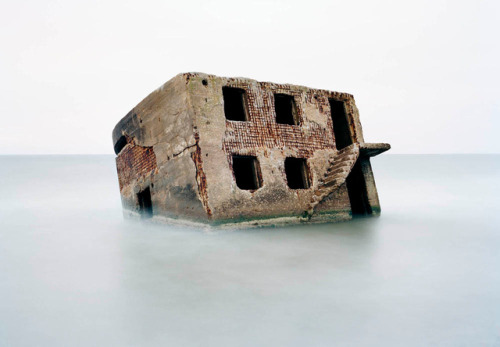
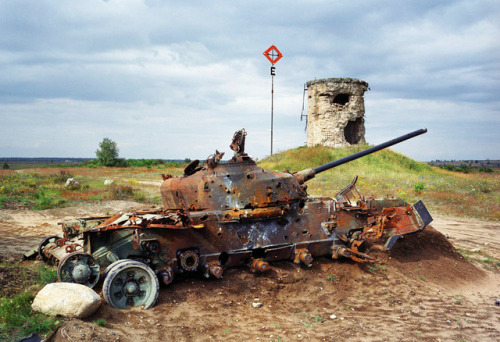
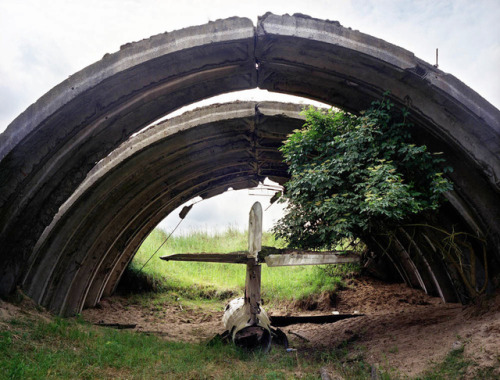



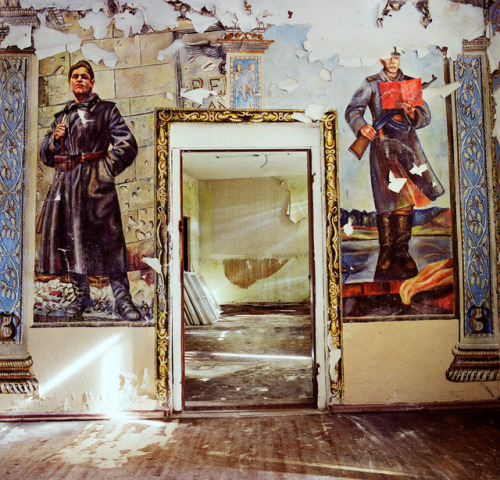
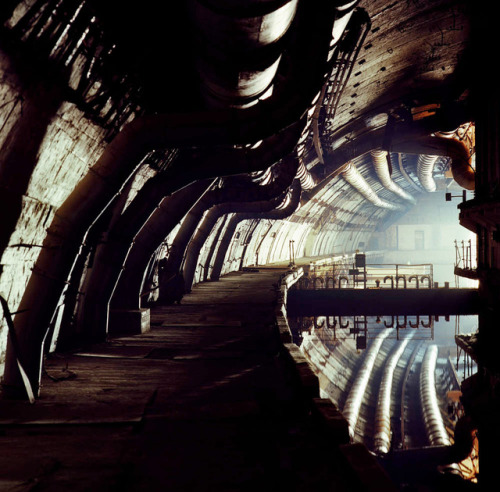


Relics of the Cold War by Martin Roemers
The Cold War is over — yet signs of it still exist. For forty years the Iron Curtain divided the countries of Europe into East and West. The arms race was unleashed, nuclear fallout shelters were constructed, and everyone braced for the worst. Martin Roemers has spent ten years in search of the traces of this period, traveling through the countries of former enemies on both sides of the line. He explored and documented underground tunnels, abandoned system control centers, former barracks, rotting tanks, and destroyed monuments. His photographs, which are presented here with essays by H.J.A. Hofland and Nadine Barth, are a stark and moving document of this era of hostility, deterrence politics, and the arms race — and also serve as an appeal for future peace.

Follow the Source Link for images sources and more information.


art

Maitland Ward

Alternative Pin Up

Please Daddy

Like what you see? Take a look at my other Tumblrs for more interesting stuff!
Dirtcase
-
 hillbillywetbackblog reblogged this · 3 years ago
hillbillywetbackblog reblogged this · 3 years ago -
 burningtheoristluminary liked this · 3 years ago
burningtheoristluminary liked this · 3 years ago -
 zeffiroh liked this · 3 years ago
zeffiroh liked this · 3 years ago -
 hillbillywetbackblog reblogged this · 3 years ago
hillbillywetbackblog reblogged this · 3 years ago -
 hillbillywetbackblog liked this · 3 years ago
hillbillywetbackblog liked this · 3 years ago -
 aviator-81 liked this · 4 years ago
aviator-81 liked this · 4 years ago -
 olfamannai liked this · 4 years ago
olfamannai liked this · 4 years ago -
 snowrainandbooks liked this · 4 years ago
snowrainandbooks liked this · 4 years ago -
 anikghosh-blog-blog liked this · 4 years ago
anikghosh-blog-blog liked this · 4 years ago -
 gaberoothekangaroo reblogged this · 5 years ago
gaberoothekangaroo reblogged this · 5 years ago -
 melpomenismask liked this · 5 years ago
melpomenismask liked this · 5 years ago -
 galaxysqvid reblogged this · 5 years ago
galaxysqvid reblogged this · 5 years ago -
 travislynch3-blog reblogged this · 6 years ago
travislynch3-blog reblogged this · 6 years ago -
 ramblebrambleamble reblogged this · 6 years ago
ramblebrambleamble reblogged this · 6 years ago -
 osborn98buur-blog reblogged this · 6 years ago
osborn98buur-blog reblogged this · 6 years ago -
 osborn98buur-blog liked this · 6 years ago
osborn98buur-blog liked this · 6 years ago